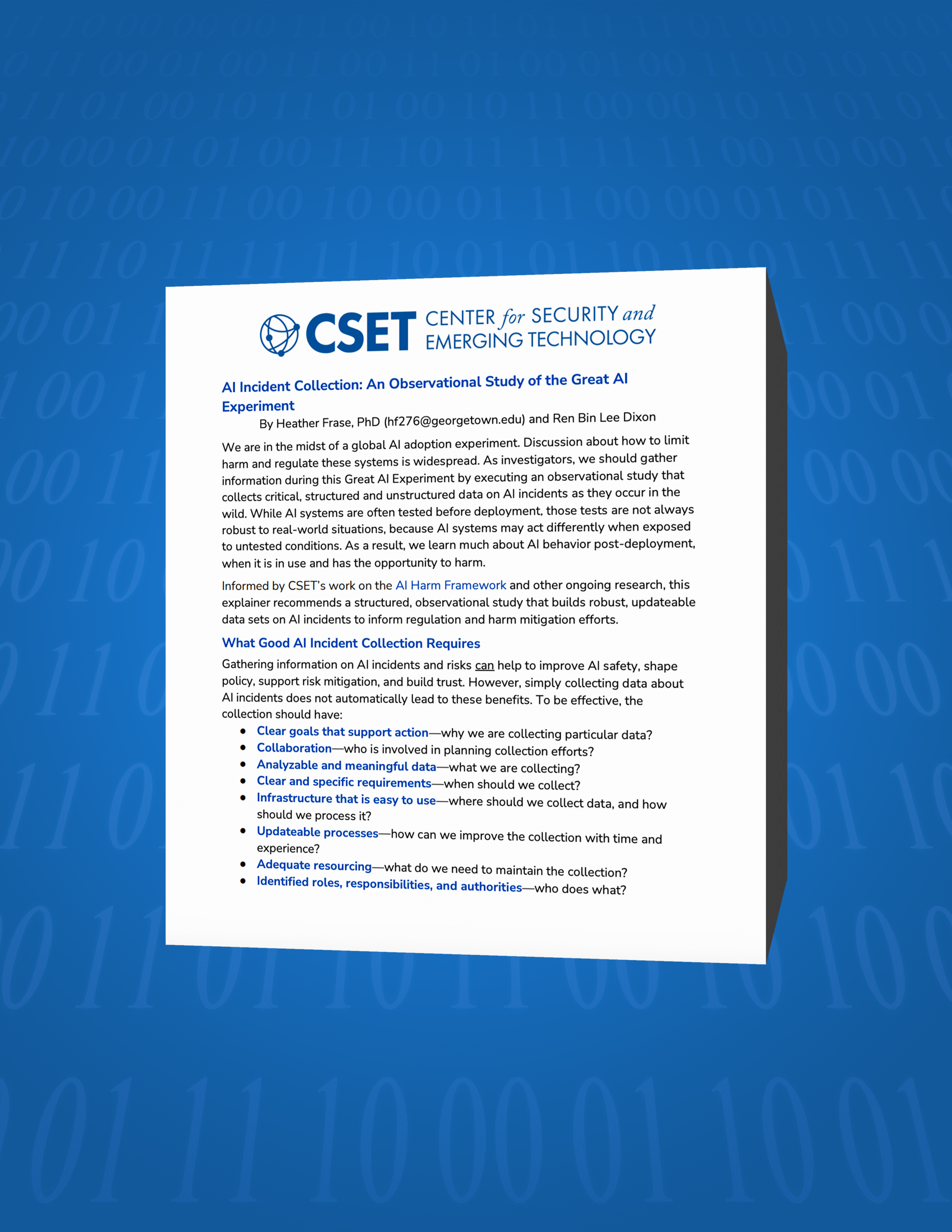
Other
AI Incident Collection: An Observational Study of the Great AI Experiment
A CSET Explainer
September 18, 2023
This explainer defines criteria for effective AI Incident Collection and identifies tradeoffs between potential reporting models: mandatory, voluntary, and citizen reporting.
Read the Explainer